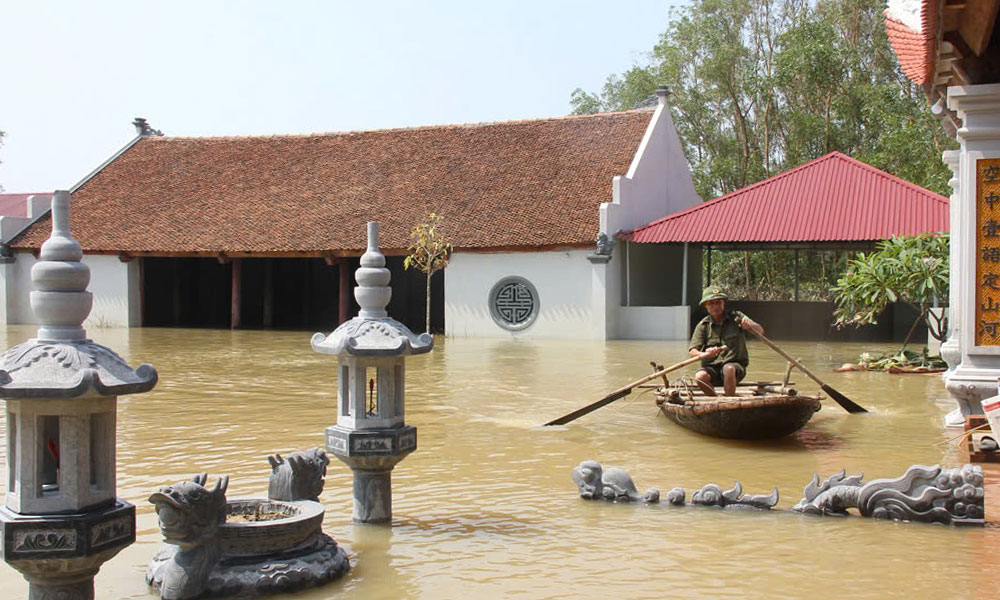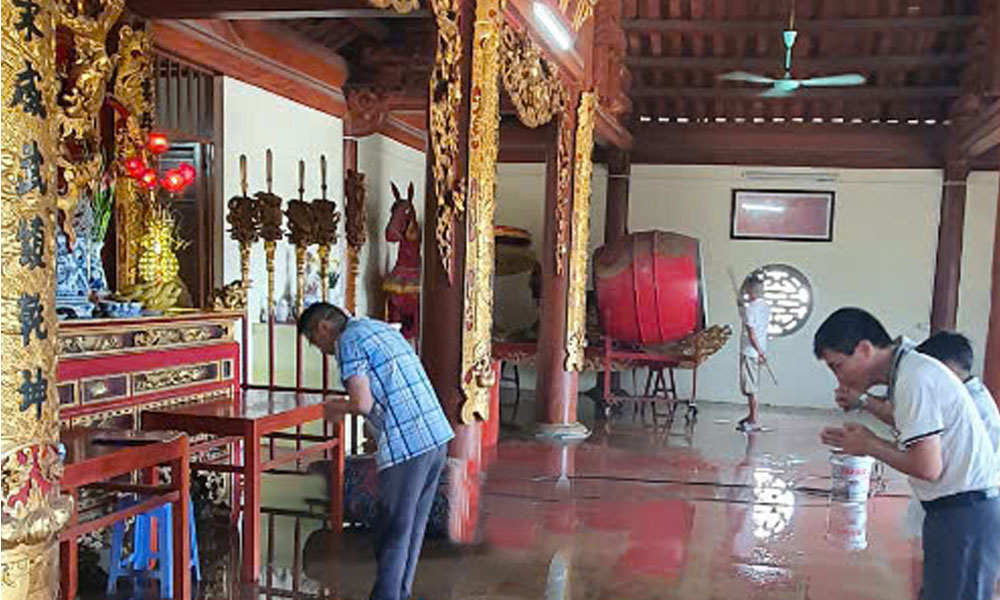Commemoration of Saints Tam Giang: A traditional beauty of residents along Cau River
Bac Giang – For generations, the villages along the Cau River have held festivals to commemorate and pay tribute to Saints Tam Giang (Truong Hong - Truong Hat) on the 12th and 13th of the eighth lunar month. This year, although floods have submerged many historical sites along the river, the local people have found ways to maintain and preserve this traditional cultural beauty.
On September 14 (the 12th of the eighth lunar month), while the Cau River's water still inundated several sites dedicated to Saints Tam Giang, residents of Chu Xa, Dong Tien, Quang Bieu, Dao Ngan 2, and Nam Ngan residential areas in Quang Chau ward (Viet Yen township, Bac Giang province) diligently prepared offerings for the saints.
 |
|
Offering incense to commemorate Saints Tam Giang at the Quang Bieu Communal House. |
Depending on the local conditions, each area had its own way to hold the commemoration, either at the communal house or on the left embankment of the Cau River if the place of worship was still deeply submerged.
 |
|
On the morning of September 14, the Quang Bieu Communal House was still under water. |
Early in the morning, Nguyen Trong Cuong, head of the Quang Bieu residential area, along with representatives from the residential area’s management board, rowed a boat to the communal house to remove the silt remaining on the floor, walls, and doors. Then they prepared a five-fruit tray, lit incense, and made offerings to perform the ritual of opening the communal house.
 |
|
Due to flooding, on September 14, residents of the Nam Ngan residential area still traveled by boat. |
According to legend, Saints Tam Giang are called by the Vietnamese people to honour two generals Truong Hong and Truong Hat. They are venerated in hundreds of villages in the basins of three rivers: Cau and Thuong in Bac Giang province, and Ca Lo which flows through Vinh Phuc, Bac Ninh, and Hanoi. These were two generals of exceptional talent and bravery during the reign of King Trieu Quang Phuc in the 6th century. The title “Saints Tam Giang” means the saints of the three rivers.
 |
|
Residents of the Dao Ngan 2 residential area perform the ritual to commemorate Saints Tam Giang under the impact of the ongoing flooding. |
To honour their great contributions, the villagers hold an annual festival with various cultural and sports activities such as wrestling, Quan ho (love duet) singing, boat racing, duck catching, and other folk games. However, this year, due to the widespread flooding, the organizers only sent representatives to the communal house to perform the rituals to ensure safety.
Not far from the Quang Bieu Communal House, the Nam Ngan Communal House also worships Saints Tam Giang. On the day of the festival, the entire residential area was still submerged. Unable to go to the communal house as in previous years, the residents held the commemoration right on the Cau River embankment.
 |
|
As the communal house is still submerged, residents of the Nam Ngan residential area hold the commemoration for Saints Tam Giang on the left embankment of the Cau River. |
"Although we held the ceremony on the embankment, it was still very solemn. It aimed to honour and pay tribute to Saints Tam Giang, and then to pray for peace and good fortune to the villagers," said Nguyen Quang Hai, head of the Nam Ngan residential area.
Going along the Cau River during the flood season, we feel that the river not only carries silt but also gathers many cultural values of Kinh Bac region before flowing out to the sea. For the households living along, the Cau River is always a beautiful, cherished, and familiar image.
Ngo Cao Thang, Vice Chairman of the Quang Chau ward People's Committee, said that the people living along the Cau River have long been accustomed to life on the water, so they are always proactive in responding to unusual weather conditions.
The locality regularly informs the residents about the flooding situation upstream and the province’s and township’s disaster response directions. Therefore, during this historic flood, the people’s safety was ensured, and property damage was minimal.
 Bắc giang
Bắc giang














Reader's comments (0)